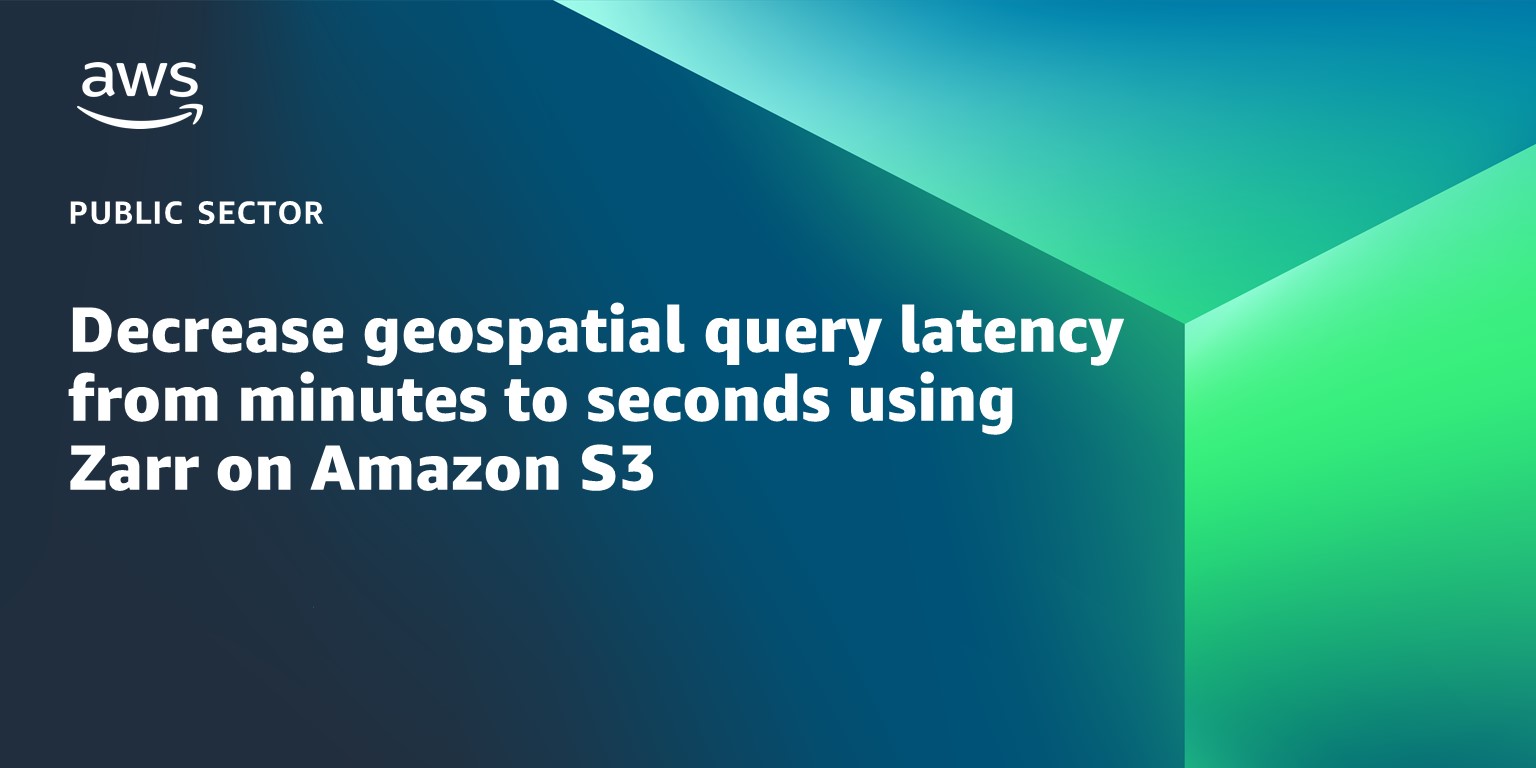AWS Public Sector Blog
Tag: satellite
AWS Professional Services collaborates with NOAA and GAMA-1 Technologies to expand NESDIS Common Cloud Framework capabilities
AWS Professional Services has partnered with the National Environmental Satellite, Data, and Information Service (NESDIS), part of the National Oceanic and Atmospheric Administration (NOAA), alongside GAMA-1 Technologies to broaden the scope and capabilities of the NESDIS Common Cloud Framework (NCCF). This work supports NOAA’s ability to ingest, manage, process, and disseminate critical environmental data. Read this post to learn more.
Strengthen federal space resilience with AWS Ground Station
In this post, we explore how AWS Ground Station public sector organizations with on-demand access to AWS-managed antennas that are available as shared or dedicated resources, scaling to the unique requirements of the mission. By adding resource capacity and redundancy with AWS-managed antenna systems, government customers can rapidly increase, differentiate, and distribute their ground segment capabilities. This enables a more flexible and resilient space architecture that can dynamically adapt to changing mission demands.
Simplify satellite contact reporting with the AWS Ground Station contacts dashboard
This post shows how Amazon Web Services (AWS) Ground Station customers can start using the Contacts dashboard for AWS Ground Station solution to fulfill their AWS Ground Station reporting and tracking needs. This solution automatically maps AWS Ground Station contacts to their associated costs and provides a feature-rich dashboard reporting capability.
Harnessing cloud solutions to tackle water challenges
In this post, we explore how Amazon Web Services (AWS) cloud-based technologies can be used to address diversified and dynamic water challenges in Europe, the Middle East, and Africa. As climate change and demographic shifts continue to strain water resources, the need for innovative, technology-driven solutions has never been more urgent.
The HALO Trust is working with AWS to clear mines faster and save lives in the world’s conflict zones
Amazon Web Services (AWS) is investing $4 million to support the work of the HALO Trust and trial the use of artificial intelligence (AI) with drone imagery to locate minefields and other explosive remnants of war in Ukraine. Innovating with AWS will enable HALO to make wider use of the high-resolution drone footage it collects, including testing machine learning (ML) models for identifying mines.
Building hybrid satellite imagery processing pipelines in AWS
In this blog post, learn how companies operating in AWS can design architectures that maximize flexibility so they can support both cloud and on-premises deployment use cases for their satellite imagery processing workloads with minimal modifications.
SeloVerde uses geospatial big data and AI/ML to monitor deforestation in supply chains, powered by AWS
Open source geospatial artificial intelligence (AI) and machine learning (ML) analyses along with Internet of Things (IoT)-connected sensors can power near real-time data built on the cloud and assist in decision-making. Read this blog post to learn how Amazon Web Services (AWS) is supporting the Government of Pará, Brazil, in designing and deploying SeloVerde (Green Seal), a cutting-edge tool to address climate change challenges and traceability in deforestation-risk supply chains.
Building high-throughput satellite data downlink architectures with AWS Ground Station WideBand DigIF and Amphinicy Blink SDR
This blog summarizes some of the benefits of cloud-based ground segment architectures, and demonstrates how users can build a proof-of-concept using AWS Ground Station’s capability to transport and deliver Wideband Digital Intermediate Frequency (DigIF) data, along with the software-defined radio Blink, built by the AWS Partner Amphinicy.
Japan Manned Space Systems uses AWS Snowcone to automate and optimize data delivery from space to Earth
Approximately 400 kilometers above the Earth’s surface, Japan Manned Space Systems Corporation (JAMSS) used an AWS Snowcone SSD onboard the International Space Station (ISS) to quickly and autonomously transmit large volumes of data from space back on the ground into AWS. The AWS Snowcone, which arrived on the ISS in July 2022 as part of the first Axiom Space Mission (Ax-1), is available to power on-orbit data processing experiments for researchers, students, and scientific organizations.
Decrease geospatial query latency from minutes to seconds using Zarr on Amazon S3
Geospatial data, including many climate and weather datasets, are often released by government and nonprofit organizations in compressed file formats such as the Network Common Data Form (NetCDF) or GRIdded Binary (GRIB). As the complexity and size of geospatial datasets continue to grow, it is more time- and cost-efficient to leave the files in one place, virtually query the data, and download only the subset that is needed locally. Unlike legacy file formats, the cloud-native Zarr format is designed for virtual and efficient access to compressed chunks of data saved in a central location such as Amazon S3. In this walkthrough, learn how to convert NetCDF datasets to Zarr using an Amazon SageMaker notebook and an AWS Fargate cluster and query the resulting Zarr store, reducing the time required for time series queries from minutes to seconds.









